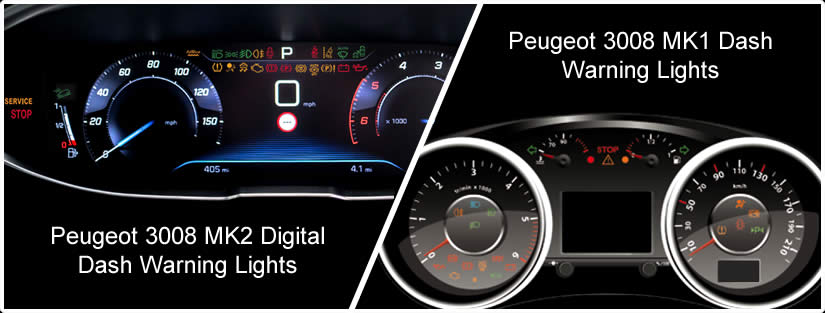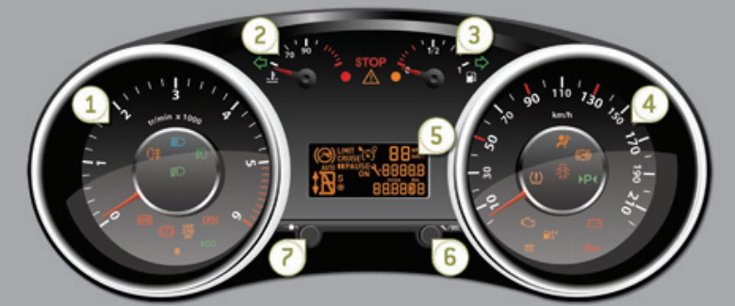Decoding the Peugeot 3008 Warning Lights: A Complete Guide
Your Peugeot 3008 is a sophisticated machine, packed with advanced technology and safety features. But what happens when a little light suddenly illuminates on your dashboard? That’s your car communicating with you, and understanding what those warning lights mean is crucial for both your safety and the longevity of your vehicle. This comprehensive guide will decode the Peugeot 3008 warning lights, providing you with the knowledge to quickly diagnose potential issues and know when to take action. We’ll cover everything from the critical red lights to the informative amber ones, ensuring you’re well-equipped to handle any situation.
Understanding the Language of Your Peugeot 3008: Warning Light Colors
Before we delve into specific symbols, it’s essential to understand the color-coding system used by Peugeot 3008 warning lights. This color scheme provides an immediate indication of the severity of the issue:
- Red: These lights indicate a critical problem that requires immediate attention. Continuing to drive with a red warning light illuminated could lead to serious damage or even a safety hazard.
- Amber/Yellow: These lights signal a potential problem that needs attention soon. While you might be able to continue driving, it’s recommended to address the issue as soon as possible.
- Green/Blue: These lights are generally informational, indicating that a system is activated or functioning correctly. For example, your headlights or cruise control.
Decoding the Key Warning Lights on Your Peugeot 3008
Let’s break down some of the most common and critical warning lights you might encounter in your Peugeot 3008. This is not an exhaustive list, but it covers the most important ones:
Red Warning Lights: Immediate Action Required!
- Brake System Warning Light ( ! or (P) inside a circle): Indicates a problem with the braking system. This could be low brake fluid, a faulty brake sensor, or a more serious issue. STOP IMMEDIATELY in a safe location and check brake fluid levels. If the light persists, do not drive the vehicle and seek professional assistance.
- Engine Oil Pressure Warning Light (Oil Can): This signifies low oil pressure. This is a serious issue that can lead to engine damage. STOP IMMEDIATELY and check the oil level. If the light remains on after topping up the oil, or if you are unsure, do not drive the vehicle and seek professional assistance.
- Engine Coolant Temperature Warning Light (Thermometer in a Wave): Indicates the engine is overheating. STOP IMMEDIATELY and allow the engine to cool down. Check the coolant level and look for any leaks. Do not drive the vehicle if the light remains on or if you suspect a major leak. Seek professional assistance.
- Battery Charging System Warning Light (Battery Icon): Indicates a problem with the charging system, such as a faulty alternator or a discharged battery. While you might be able to drive for a short distance, the battery will eventually drain. Seek professional assistance.
- Airbag Warning Light (Passenger seated with Airbag): Indicates a malfunction in the airbag system. This could mean the airbags won’t deploy in an accident. Have the system checked by a professional immediately.
- Power Steering Warning Light (Steering Wheel Icon): Indicates a failure in the power steering system. This will make the steering significantly harder. Seek professional assistance.
Amber/Yellow Warning Lights: Schedule Service Soon
- Engine Management System/Check Engine Light (Engine Icon): This light can indicate a variety of issues, from a loose gas cap to a more serious engine problem. Have the vehicle diagnosed by a professional as soon as possible.
- Anti-lock Braking System (ABS) Warning Light (ABS Icon): Indicates a problem with the ABS system. While your brakes will still function, the ABS feature will be disabled. Have the system checked by a professional.
- Electronic Stability Program (ESP) Warning Light (Car with Wavy Lines): This light indicates a problem with the ESP system, which helps to maintain vehicle stability. Have the system checked by a professional.
- Tyre Pressure Monitoring System (TPMS) Warning Light (Exclamation Point inside a Tyre): Indicates low tire pressure in one or more tires. Check and inflate your tires to the recommended pressure.
- Diesel Particulate Filter (DPF) Warning Light (Coiled Exhaust Pipe Icon): Indicates that the DPF needs to be regenerated (usually by driving at higher speeds for a period). If the light persists, seek professional assistance.
- AdBlue Warning Light (AdBlue Tank Icon): Indicates low AdBlue levels (for diesel models). Refill the AdBlue tank.
Informational Lights (Green/Blue):
- Headlight On (Headlight Icon): Indicates the headlights are switched on.
- High Beam On (Headlight Icon with Beams): Indicates the high beams are activated.
- Fog Lights (Fog Light Icon): Indicates the fog lights are switched on.
- Cruise Control (Speedometer Icon): Indicates the cruise control is activated.
- Turn Signals (Arrow Icon): Indicates the turn signals are activated.
What to Do When a Warning Light Illuminates
- Don’t Panic: Remain calm and assess the situation.
- Identify the Light: Refer to this guide or your owner’s manual to identify the meaning of the light.
- Assess the Color: Red lights require immediate action. Amber lights require attention soon.
- Take Action: Follow the recommendations for the specific warning light.
- Consult a Professional: If you’re unsure about the cause of the light or if it persists after taking action, consult a qualified mechanic or your Peugeot dealer.
Regular Maintenance and Prevention
The best way to minimize warning light occurrences is to maintain your Peugeot 3008 regularly. This includes:
- Following the recommended service schedule: This ensures your vehicle receives the necessary maintenance at the correct intervals.
- Checking fluid levels regularly: Regularly check your oil, coolant, brake fluid, and other fluids.
- Inspecting tires: Regularly check your tire pressure and condition.
- Listening to your car: Pay attention to any unusual noises or vibrations.
Frequently Asked Questions (FAQs)
What should I do if multiple warning lights come on at the same time? This could indicate a more significant problem. Stop the vehicle safely and consult your owner’s manual or contact a qualified mechanic immediately.
Can I drive with the check engine light on? It depends. While you can drive, it’s recommended to have the vehicle diagnosed as soon as possible. Ignoring the check engine light could lead to more serious and costly repairs.
My warning light is on, but my car seems to be running fine. Should I still be concerned? Yes. Even if your car seems to be running fine, a warning light indicates a potential issue that needs attention. Ignoring it could lead to a breakdown or more significant damage.
Where can I find the meaning of a warning light that isn’t listed here? Consult your Peugeot 3008 owner’s manual. It provides a comprehensive list of all warning lights and their meanings. You can also often find the information online via Peugeot forums or websites.
How often should I get my Peugeot 3008 serviced? Refer to your owner’s manual for the recommended service intervals, which are typically based on mileage or time. Adhering to the service schedule ensures your vehicle remains in optimal condition.
Conclusion: Stay Informed, Stay Safe
Understanding the warning lights on your Peugeot 3008 is an essential part of responsible car ownership. By knowing what these lights mean and taking the appropriate action, you can ensure your safety, prevent costly repairs, and keep your vehicle running smoothly for years to come. Regularly consult your owner’s manual, schedule regular maintenance, and don’t hesitate to seek professional help when needed. Drive safely!




